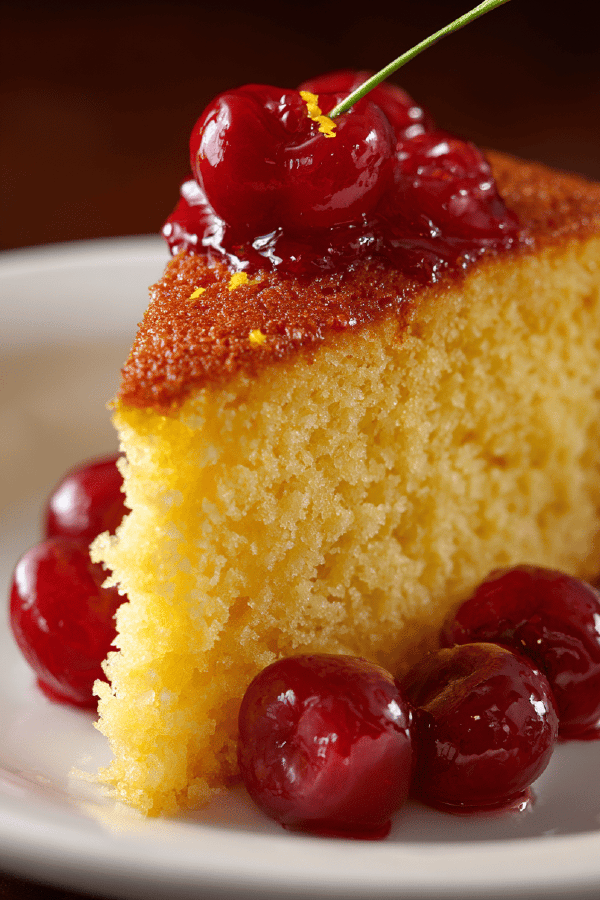Featured Recipe
Vanilla Reduced Fat Cake with Citrus Twist

By Kate
"
A lightened take on classic vanilla cake. Reduced butter by a third, replaced milk with almond milk for a subtle nutty note. Puffed up with baking powder and a pinch of lemon zest, adding brightness. Egg yolk swapped for unsweetened applesauce to boost moisture without fat. Soft crumb, little crumble. Bakes until golden, edges firm and springy, crackled top hints readiness. Avoid overmixing for tender crumb, alternate dry and wet yields uniform mix. Citrus zest brightens same vanilla base, great fresh or with berry compote.
"
Prep:
20 min
Cook:
48 min
Total:
Serves:
8 servings
cake
baking
dessert
French-Canadian
Introduction
Fat trimmed but flavor intact. Butter quantity dialed down nearly half. Applesauce backfills moisture, a pro tip from baking science—replaces yolk fat with fruit moisture, no rubbery crumb. Almond milk swaps cow’s milk, subtle nuttiness, lighter mouthfeel, and dairy avoidance. Zest dropped in to keep vanilla cake from being boring, wake up palate. Whipping eggs longer pulls air; aeration essential since less fat means less richness—can’t skip this. Careful alternating wet and dry mixes without overbeating—raw flour feels gritty, so fold gently until just mixed. Watch for visual clues, not blind time checks. The depth of color, slight crack on top, spring back are red flags you want. Cut and serve with acid touches — fresh fruit, coulis — counters cake sweetness. No thrash and dash. Take your time. Proper prep, patience, and the right cues bring a fine crumb even in lower fat cakes.
Ingredients
About the ingredients
Flour can be swapped half-and-half with cake flour if you want a finer crumb, but balance rise with more baking powder. Unsweetened applesauce acts as fat replacer; if unavailable, try mashed banana but expect slight banana note. Almond milk optional, but adds dimension—use soy milk if allergic or regular milk if no restrictions. Butter softened, not melted, ensures creaminess not separation. Lemon zest isn’t mandatory but recommended — brightens flavor, offsets richness. Vanilla extract: pure vanilla for depth, imitation works, but adjust sugar slightly since imitation can be artificial-tasting. Sugar amount kept high to help with moisture and crust development; cutting much sugar affects texture and outer caramelization. Fresh zest vital—dried won’t provide same aroma. Baking powder rise must be fresh. Store ingredients room temp for best integration.
Method
Technique Tips
Start with preheating oven and positioning rack early. Pan prep critical—parchment guarantees bottom won’t stick, side grease and flour prevent tearing on release. Mixing dry ingredients thoroughly distributes leavening and zest evenly. Beat eggs, butter, applesauce, sugar thoroughly; this traps air, makes crumb lighter – don’t skimp time here. Fold dry in thirds with wet to prevent clumping or batter collapse. Resist urge to overbeat; flour mix-ins should vanish but no more stirring. Tap pan to pop large bubbles, avoid big holes in crumb. Check doneness visually not just clock—golden crust, crackled top, edges pulling away are good signs. Toothpick test is secondary but useful. Slight moist crumbs on skewer okay; wet batter no. Cooling in pan 10 minutes avoids cracking; removing sides early prevent sogginess. Complete cooling before slicing or it crumbles. Wrap leftovers well or cake dries out quickly. Can freeze sliced. Simple tricks get good texture even with fat cut.
Chef's Notes
- 💡 Preheat oven well; consistency matters. If your oven runs hot, adjust temp slightly. Look for golden edges as cues. Parchment in the springform is non-negotiable. Edges pulling away from sides is key.
- 💡 Eggs must be beaten long. Your goal: airy batter. Pulled air supports rise; fat reduction means longer mixing is vital. Folding dry ingredients, do it gently. Don't chase perfection; risks toughening batter.
- 💡 Mixing flour too much leads to dry, dense cake. Oh, also, swirling through dry and wet mix is essential. Start with dry, careful not to overdo it. If batter is too thick, tweaking almond milk helps.
- 💡 Cake cools slowly—leave it in the pan for about 10 minutes. Perfect for avoiding cracks. But switch to rack afterwards. Rings off, set on the counter, keep air circulating.
- 💡 Wrap leftovers tightly; they dry quickly. Consider freezing slices for later use. Fresh is better but taste will stick around for days in right container.
Kitchen Wisdom
Can I substitute regular milk?
Yes, but almond milk's subtle nuttiness shines through. Use what you like; soy is another option. See what works.
What if my cake sinks in the middle?
Often underbaking or too heavy batter. Adjust temp, maybe add a touch baking powder. Visual clues matter, look for a golden pull.
How to keep the cake moist longer?
Store covered in sugar or simple syrup. Helps with moisture retention. Freezing slices is great too. Just wrap well.
Can I use a different sweetener?
Sure, but granulated serves the function well. Consider adjusting for honey or liquid ones; need balancing for texture.



